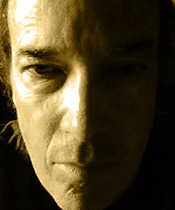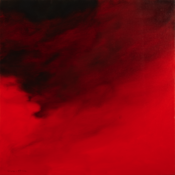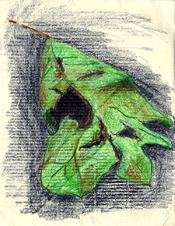Sunset, Tuesday, 2 February 2010
 William Theodore Van Doren. Sunset from Stony Point, Albemarle County, Va. Oil on canvas, 16 x 20.
William Theodore Van Doren. Sunset from Stony Point, Albemarle County, Va. Oil on canvas, 16 x 20.
Snowing at sunset (and for the past couple of hours), 33°.
Given what I have to report, it’s just as well that with snow blanking out the Blue Ridge, I’m featuring the woods in the foreground. I’ve written about these woods before, especially in the final entry on “Looking at the Sunset,” concerning how they’ve come to affect the view. I said I’d been surprised by how much the woods, as an aggregate, had grown in the 15 years I’d been painting the sunset beyond them, and I basically implied, in so many words, that I must’ve been kinda dumb not to realize that they would.
What I said, exactly, was
I guess I always just thought the woods were what they were – the woods, mature, pretty much unchanging. But “the woods” must be jumping up quite a bit every year. Who knew?
But now comes word, in yesterday’s New York Times, that woods in the eastern U.S. have been responding to climate change by growing two to four times faster than normal. Although they apparently can’t keep this up indefinitely, for now they’re consuming some of the excess carbon dioxide. However much snow we may be getting in this brief season, and regardless of what the groundhog may have to say, it seems appropriate to welcome you to the greenhouse.
 Tuesday, February 2, 2010 at 07:39PM | by
Tuesday, February 2, 2010 at 07:39PM | by  BVD | in
BVD | in  Sunset Paintings,
Sunset Paintings,  Sunsetology | tagged
Sunsetology | tagged  Blue Ridge,
Blue Ridge,  Groundhog Day,
Groundhog Day,  The New York Times,
The New York Times,  climate change,
climate change,  snow,
snow,  trees | | Comments Off
trees | | Comments Off 





